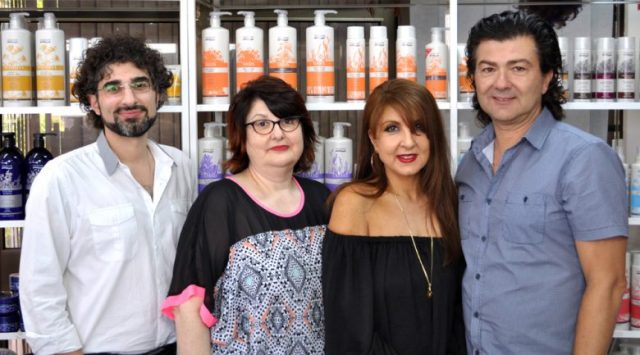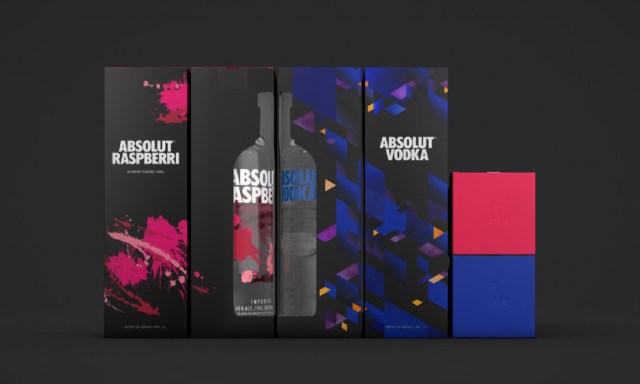
This article first appeared in Labels and Labeling, written by Andy Thomas-Emans
The Label Academy’s third virtual master class covered the state of the art in brand protection and anti-counterfeiting technologies.
As James Bevan, director of consultancy Vandagraf, noted, the scale of the global counterfeiting problem is terrifying.
According to OECD figures, counterfeit and pirated products are valued at US$509 billion, representing well over three per cent of world trade. But even these figures are likely a gross underestimate of the true scale of counterfeiting activity, according to Bevan, since they only represent export seizures by customs, not counterfeits which circulate in domestic markets.
Furthermore, the OECD figures cover mainly consumer and pharma products, potentially leaving out industrial component counterfeits such as microchips, auto and aero-related products.
Footwear represents well over one fifth of all counterfeit seizures, followed by clothing, leather goods and electrical appliances. A shocking seven per cent of counterfeits are medical equipment and pharma products.
Bevan pointed to the exponential growth of online retailing, magnified by the impact of lockdowns during the COVID pandemic, as a major driver of counterfeit products, including COVID test kits and PPE.
Regular L&L contributor Vicki Strull, branding consultant at Vicki Strull Design, looked at how packaging – particularly in the context of e-commerce sales – can help reassure consumers they have received an authentic product.
Strull pointed out that factors such as robustness of the packaging construction, choice of substrate, print technology, colour consistency and use of advanced finishing techniques combine to give the consumer an expectation of quality which can be used as a benchmark when a product is delivered.
Strull pointed to embellishment, in particular, as a way for brands to distance themselves from fake products, which are always produced as cheaply as possible. These features should be photographed in high resolution and shown clearly on the social media or web page as a reference for the consumer.
Given that footwear represents the biggest category of counterfeit goods, it was fitting to hear about the industry’s response from Christina Mitropoulos, director of brand protection and manufacturing initiatives at the American Apparel & Footwear Association.
Representing 360 member companies from manufacturers to brands and retailers, the AAFA’s Brand Protection Council (BPC) focuses particularly on the proliferation of counterfeit goods found on online marketplaces and social media platforms.
Technology response
Paul Dunn, chair of the International Holographic Manufacturers Association, demonstrated how holography has evolved to become an integral component of sophisticated multi-layer security systems.
After talking about new technology developments such as the use of nano-level optical structures, he used a sophisticated security label developed for the Tonino Lamborghini brand as a case study. This label is constructed from a high security tamper-evident substrate and includes, along with the hologram, alphanumeric numbering (Unique Identification number, or UID) and a QR code.
The labels are applied to Lamborghini swing tickets and warranty cards, which themselves incorporate advanced anti-counterfeit print techniques and spot UV security varnishes.
Using OpSec’s Insight platform all shipments of the hologram security labels are tracked to Tonino Lamborghini’s manufacturers, meaning the location, product traceability and status of every UID is known at all times.
As manufacturers apply the labels, they are required to declare within the lnSight platform which UIDs have been used. It allows the active monitoring of online sales channels and can detect patterns of infringing sellers.
Consumers participate in the authentication process by scanning a QR code to register their product.
The contribution of digital printing to a brand protection strategy was examined by Moshiko Levhar, EMEA security and brand protection business manager at HP’s Graphics Solutions Business.
Levhar examined the multi-layered nature of effective brand security systems, taking in forensic, covert, semi-covert (requiring tools such as a magnifying glass) and overt technologies.
Digital print allows a wide range of variable graphic elements to be incorporated into a label, including micro QR codes, serialised microtext, guilloches and human-readable QR codes.
Levhar explained that HP works with a number of partners where specific secure technologies are implemented. For example, where anti-diversion rather than anti-counterfeit is the goal. Scan Trust provides its secure track and trace QR code technology.
Covert digital print technologies include printing of invisible yellow QR codes or other serialised text or codes. These can be combined with forensic high end security inks to create multi-layered brand protection systems.
Other techniques HP’s partners bring to the table include embedding a secure graphic within a QR code, making it impossible to copy.
A case study protecting a high-value Ginseng brand cited by Levhar involved a combination of unique QR codes and a guilloche symbol which appears both on the pack and on the consumer’s smartphone screen, so the two can be compared. This provides both an additional layer of overt security and an interesting way to engage the consumer.
Smart chips and tamper-evidence
Tony Fazhev, who leads Avery Dennison’s NFC-related activities in Europe, explained the growing number of chip-based applications for brand protection, including seal tamper protection, encryption of product certificates, authentication via smartphone, and authentication of provenance through blockchain integration.
A key benefit of NFC chips as part of an anti-counterfeit strategy is how easily they can be concealed, for example behind the decorated label, on a bottle neck label, or within the closure.
Fazhev pointed out how NFC encourages consumers to actively engage with product authentication and supply chain security simply by tapping with an NFC-enabled smart phone, at the same time opening up opportunities to engage with the brand.
One key application for NFC and blockchain described by Fazhev is proving COVID test kit authenticity. Scanning the NFC tag on a smart phone also allows the patient to securely access diagnostic information.
Tamper-evident (TE) labels have long been a key element in the fight against product tampering, and Michael Welch, senior product manager, durables (US) at Avery Dennison, gave an in-depth explanation of how they work and key applications.
TE labels work by combining a strong adhesive with tearable face materials. Destructible face materials split into layers or break into little pieces when removed, while Void labels leave behind warning text or logos when the label is removed. TE labels can be either overt or covert depending on whether you are trying to deter theft/ tampering or deter counterfeiting.
Welch ran through how different types of adhesive impact the void label, whether permanent, dry peel or no residue, as well as the different types of frangible films and papers.
An important recent development is Amazon’s mandate for sealing and packaging of hygienic products using TE labels. This specifies that TE labels must be opaque, incorporate a logo that cannot be replicated; leave a clear sign of tampering on the product when broken; should be of different color and should not blend in with the surface of the product. The seal should also be sturdy, so the only way to break it is with ‘clear intent’.
A label converter perspective on TE labels came from Dr Adrian Steele, managing director at Mercian Labels. Steele looked at how bad actors attempt to nullify tamper evident labels and how these attacks can be countered.
His case studies included security seals developed by Mercian for the Royal Mint, which involved a dual layer Labellock label with bespoke in-register sub-surface messaging and clean branding to confirm authenticity.
In the case of securing a Verifone card payment unit, Mercian added a bespoke halftone message which showed the underlying package color along with sub-surface numbering. A solution
for an auto parts manufacturer involved a covert UV blacklight sub-surface message and hidden colour shift inks.
Taggants and watermarks
Secure taggants represent a key vector of development for brand protection strategies. Michael Brice, vice-president of sales and business development at INX International Ink, and Keith Goldstein, CEO of VerifyMe, explained how they jointly developed a system for printing secure covert or overt codes using virtually any conventional or digital printing process.
Inks specially developed by INX incorporate VerifyMe’s patented RainbowSecure pigment, which fluoresces at a particular wavelength when illuminated by the company’s VeriPAS mobile authenticator.
The RainbowSecure pigment is inorganic with a high degree of lightfastness. The wider RainbowSecure eco-system adds the ability to detect, track and trace, and authenticate these printed codes or marks via a secure cloud server and to geolocate the product.
INX has tested the ink system with its own NW series of digital label printers and CIJ printers, as well as on conventional flexo and offset presses.
Concluding the master class, Digimarc’s ‘product evangelist’ Jay Sperry discussed the company’s item-level digital watermarking technology, which has recently been adopted by the ‘Holy Grail 2’ project for automated sorting of plastic containers.
Digimarc’s technology involves printing imperceptible barcodes onto product packaging or labels (or etched onto the product itself), which can then be detected by automated scanners and a range of other detection devices, including smart phones.
Variable Digimarc codes gives each product its own digital identity, which allows traceability through the supply chain. The digital ecosystem built by Digimarc enables quick validation of product authenticity by customs officers, supply chain staff and consumers.
A key feature of the Digimarc code is redundancy, with images repeated across the label or pack surface, which Sperry says virtually guarantees that the codes can be read in any orientation.


